Vertical/Short Take Off Vertical Landing (V/STOL) combat jet aircraft were first developed in the late 1950’s and early 1960’s to provide a means for an aircraft to operate from normal bases, damaged airfields, rugged forward field deployments close to combat zones and from air-capable ships such as aircraft carriers and helicopter carriers. The concept was born from the fear that if the Cold War became a full-blown war NATO airfields were vulnerable and could be taken out of action from Soviet air attack. A versatile V/STOL combat jet aircraft that could operate from just about anywhere was a solution to this problem and early experimental aircraft were developed by the United Kingdom, France, West Germany and the Soviet Union. The United States dabbled with designs also but ultimately only the UK and the Soviets were successful in developing operational aircraft during this early period.
Over the years I have seen a lot of these early V/STOL aircraft in museums and also had the privilege to see a number of more recent types take to the skies. There is always something special about seeing a jet fighter just hovering in front of you. The following is a brief history on some of the more significant first generation V/STOL combat jet aircraft experimental prototypes and concepts developed in the late 1950’s through to the 1960’s including those developed by the Soviet Union.
THE P.1127
In 1957 British aviation designer Hawker Siddeley privately produced 6 Hawker Siddeley P.1127 V/STOL prototypes fitted with a Rolls Royce Pegasus engine that had 4 vectorable thrust nozzles to provide vertical and horizontal thrust (the various prototypes had different engines including the Pegasus 2, Pegasus 3 and the last had the Pegasus 5). Upon flight testing in 1960, despite the loss of the first 3 prototypes in crashes (no pilots were lost), the P.1127 was deemed worthy of further development by the Royal Air Force which lead to the improved Hawker Siddeley Kestrel FGA.1 prototype.
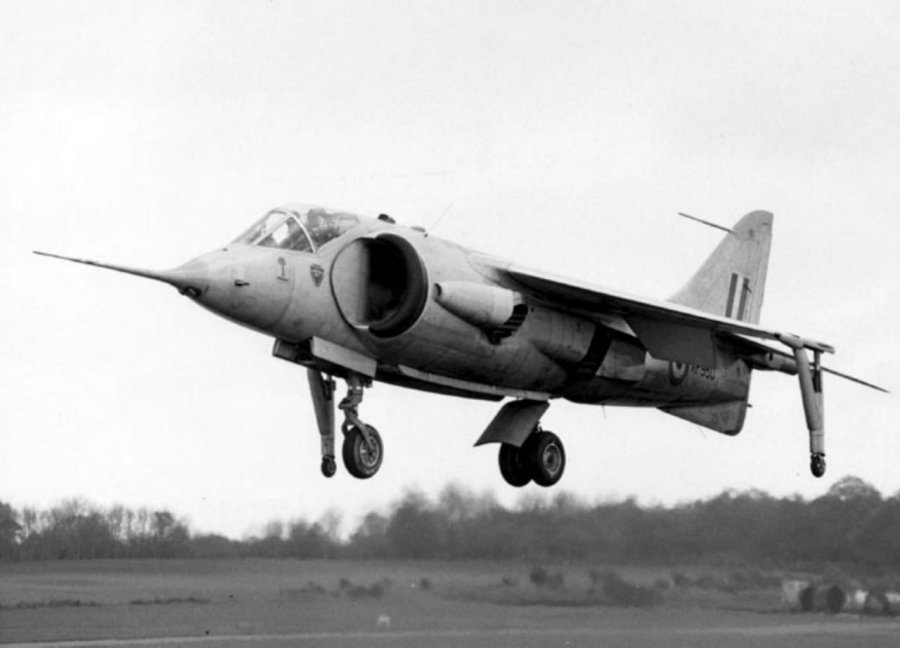

THE KESTREL
Hawker Siddeley Kestrel FGA.1 prototype with a Pegasus 5 engine first flew in 1964. Thorough testing of the Kestrel began in 1965 with 9 aircraft operated by the Tripartite Evaluation Squadron (TES that was first established in 1962 and included pilots from the UK, United States and West Germany). The Kestrel was put through its paces in near operational conditions including forward deployment in unprepared sites and wooded areas. 960 test sorties were conducted which included a massive 1,366 takeoffs and landings! Only 1 aircraft was lost in an accident and the test flights through to November 1965 proved the success of the concept and would lead to further development into an operational aircraft which became the famed Harrier “jump jet” (an order for 60 was placed in 1967).

6 of the Kestrels were then sent to the United States for further combined testing by the USAF, US Navy and USMC (redesignated XV-6A Kestrel) and then 4 were retained by the USAF and 2 allocated to NASA for further testing. The remaining 2 Kestrels stayed in the UK at Royal Aircraft Establishment (RAE) Bedford with 1 being used for experimental flight testing with the Blind Landing Experimental Unit (BLEU) and the other was fitted for test flights with an uprated Pegasus 6 engine.
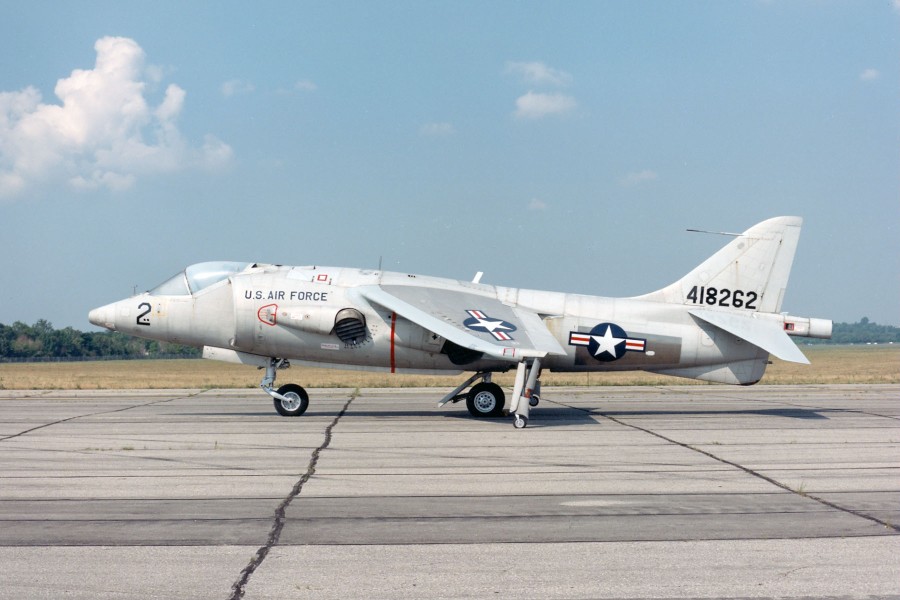
SUPERSONIC V/STOL
United States
In 1955 the Bell Aircraft company was requested by the USAF and US Navy to develop plans for a V/STOL or STOVL supersonic combat aircraft. This resulted in a concept Mach 2.0 capable V/STOL 8 engined fighter designated the Bell D-188 for the Navy version and D-188A for the USAF version. The aircraft would have had rotating wingtip pods with 2 engines each for vertical lift and horizontal flight, then 4 additional engines were to be fitted in the fuselage with 2 behind the pilot pointing downwards solely for VTOL and 2 in the aft fuselage for horizontal thrust. Navy interest in the project ceased in 1959 but in 1960 Bell publicly showed the design for the USAF version. A mockup aircraft was built but that is as far as the project proceeded, due to the USAF cancelling the program in 1961 (the D-188A would have been redesignated XF-109A if a prototype had been built).
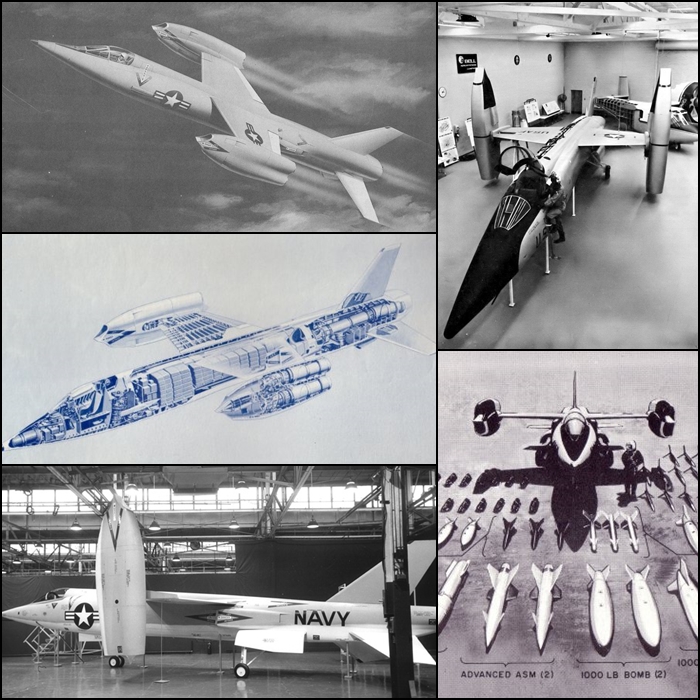
West Germany
In 1959 famed German aviation manufacturers Messerschmitt, Bölkow and Heinkel teamed together in a joint venture called “Entwicklungsring Süd” (EWR based in Munich – Heinkel left the group in 1964) to meet a German Ministry of Defence requirement for an all-weather supersonic interceptor capable of vertical take-off and landing. Similar in appearance to the Bell D-188, the ungainly looking EWR VJ-101C was the result (the VJ in the title was short for “Versuchsjäger” or Experimental Fighter) and two prototypes were built (X-1 and X-2). The EWR VJ-101C was potentially a Mach 2.0 capable V/STOL fighter fitted with 4 Rolls Royce RB 145 engines in rotating nacelles on the wingtips that were used for vertical and horizontal flight (the wingtip engines of the X-2 prototype were fitted with afterburner for more power). The main engines were supplemented by 2 Rolls Royce RB 145 vertical lift engines in the fuselage that were used whilst hovering. The design has many similarities to the proposed USAF Bell D-188A.
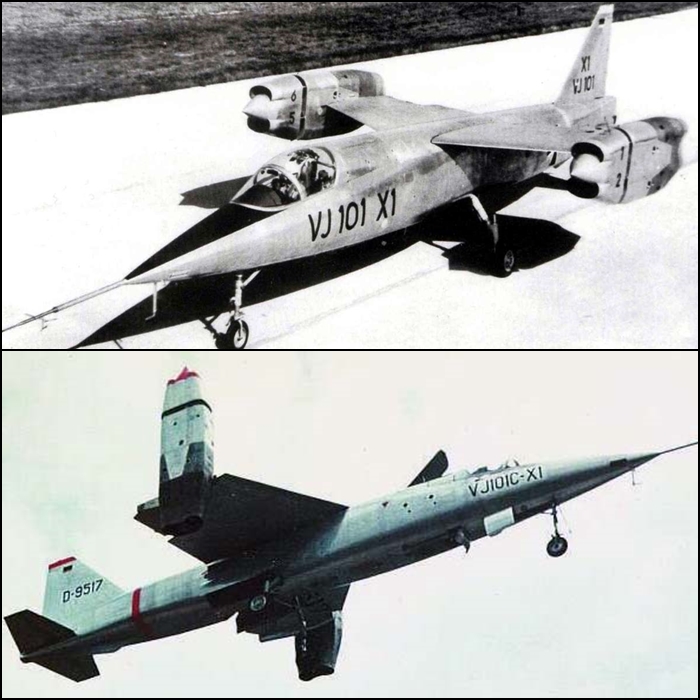
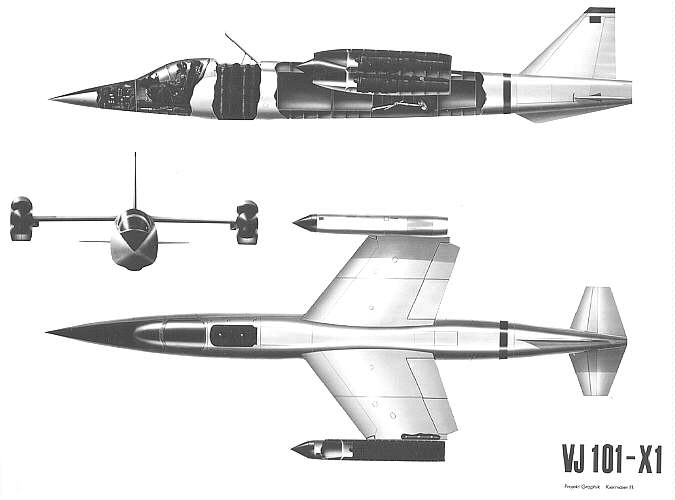
The X-1 prototype conducted its first free vertical flight on April 10th, 1963 and on September 20th, 1963 the first transition from vertical flight to horizontal flight was completed (6th test flight). Subsequent test flights exceeded Mach 1.0 without afterburner in horizontal flight (Mach 1.04 on July 29th, 1964) which was the first time a V/STOL aircraft had broken the sound barrier. Unfortunately after more than 70 test flights the X-1 prototype crashed during a vertical test on September 14th, 1964 due to an autopilot malfunction (the pilot ejected safely). The X-2 prototype continued the test program and completed its first vertical flight on June 12th, 1965. This was followed by the first vertical take-off with afterburner on October 10th, 1965 and the first full transition flight on October 22nd, 1965. The X-2 was able to reach a speed of Mach 1.14 in level flight.
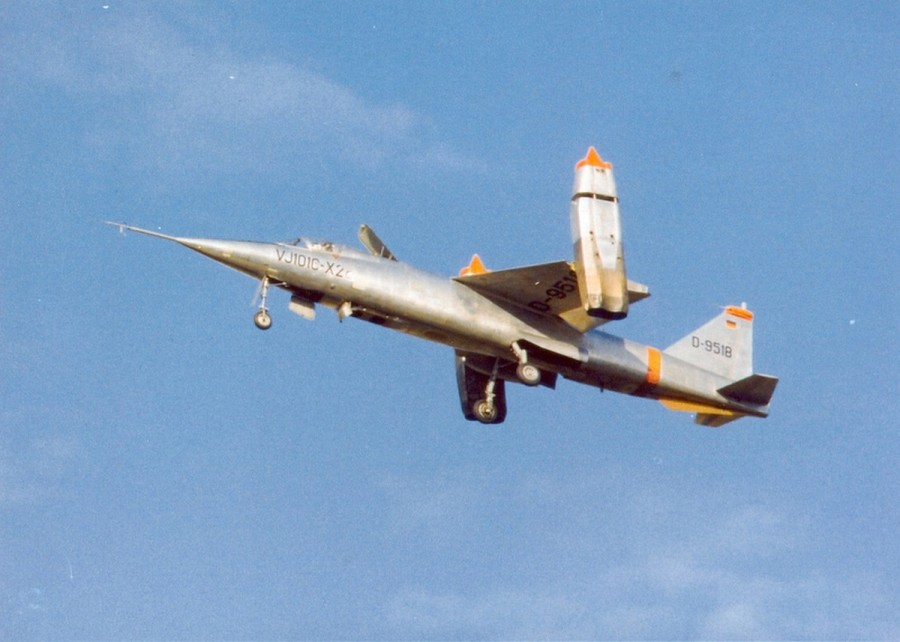
Ultimately the plan was to replace the Lockheed F-104G Starfighter in German service with the VJ-101. Unfortunately the engines suffered from overheating and experienced significant issues in vertical mode when hot engine exhaust gas entered the air intakes. As such the rotating engine nacelles concept was abandoned. The proposed successor, the VJ-101D Mach 2.0 capable interceptor with all engines in the fuselage (5 RollsRoyce RB.162 lift engines and 2 Rolls-Royce/MAN Turbo RB.153 lift/horizontal flight engines with German designed internal thrust deflectors) was cancelled after engine testing and no aircraft were built. It would have been a very complicated aircraft to operate and maintain. After 5 years of testing, the EWR VJ-101C project was cancelled in 1968 (this also coincides with the year that Italy, the UK and West Germany began to work on development of the variable geometry Panavia Tornado strike aircraft). The X-2 prototype continued to fly trial flights until 1971 when it was presented to the Deutches Museum in Munich where it resides today.
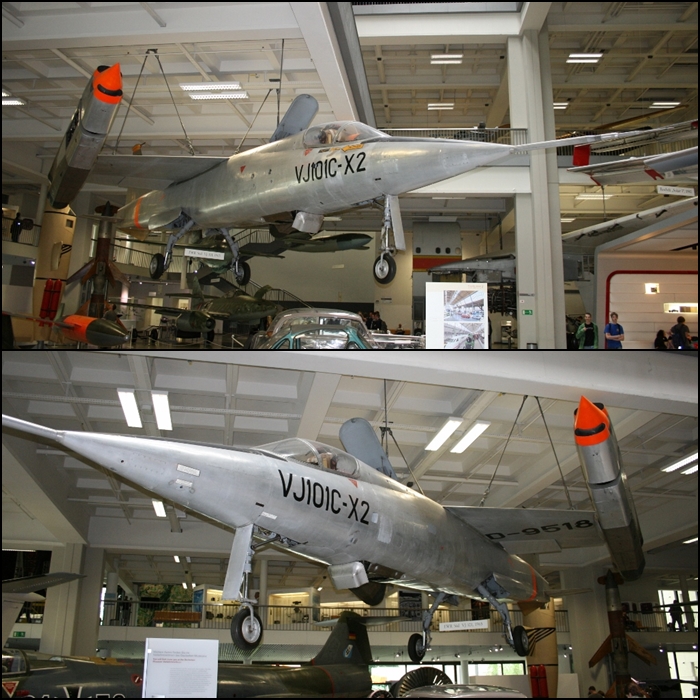

In 1966 the United States and West Germany were also working on the concept of an Advanced Vertical Strike (AVS) aircraft developed by Fairchild and EWR. The AVS was intended to be a variable geometry strike aircraft powered by two vectorable thrust main engines (proposed as either Pratt & Whitney JTF16 engines or General Electric GE 1/10 engines) in the rear of the fuselage for vertical and horizontal flight, with air intakes atop the fuselage and 2 vertical lift engines on each side of the forward fuselage (behind the cockpit) that were intended to swing out for take off and landings (see diagram below). Like many V/STOL combat designs in this period, it was overly complicated and going to be expensive to build yet alone sell (that old adage “the greater the complexity the less the reliability” came to mind for those in charge)! With the advent of development on the Panavia Tornado commencing in 1968, the project was cancelled before it left the drawing board.
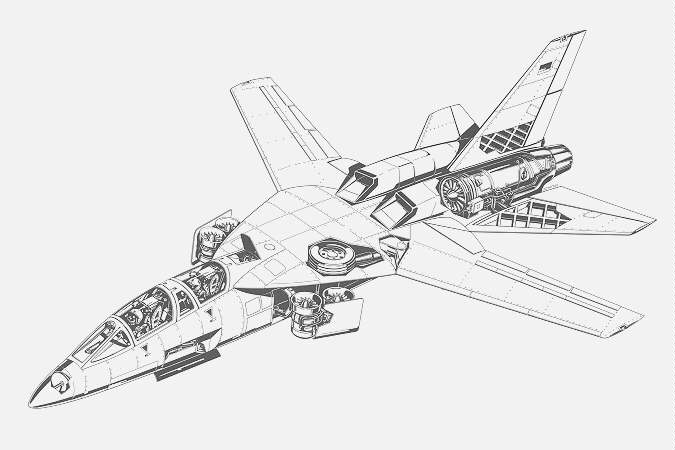
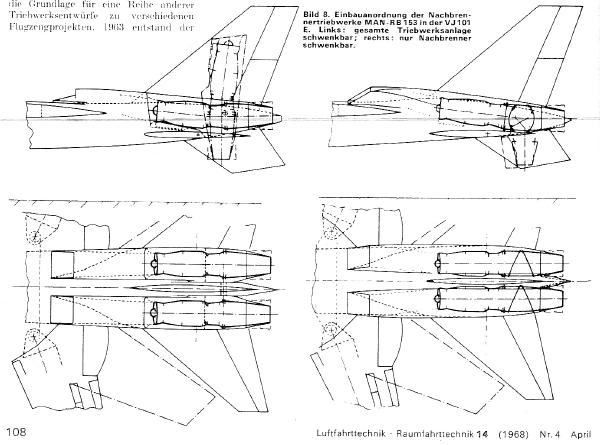
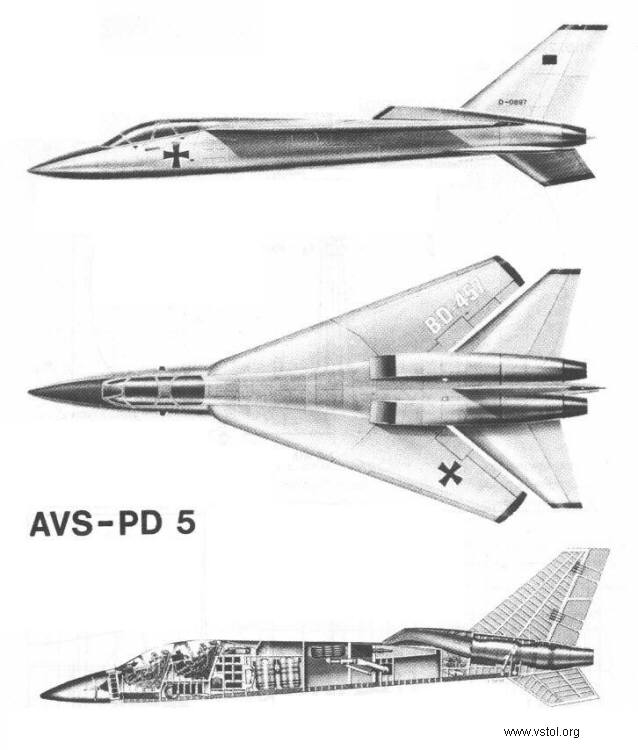
United Kingdom & France
In the 1960’s NATO put out a requirement specification to aircraft manufacturers for a V/STOL supersonic strike fighter with the added capability to conduct interception and reconnaissance missions. The plan was to have a common cost effective aircraft type across NATO countries. In 1961 the British had started worked on designs for the Hawker Siddeley P.1154 which was basically a stretched, supersonic version of the P.1127 that would be fitted with a Bristol Siddeley BS.100/9 vectored thrust engine.
Variants of the Hawker Siddeley P.1154 were proposed for both the RAF and Royal Navy but complications started to arise as both services required very different aircraft (amongst various differences across airframes, systems and avionics the Royal Navy also wanted it to be a two seater and have folding wings etc. for carrier operations – all things the RAF did not require), this coupled with rising costs, a 1964 change in government (looking for budget cuts), potential equipment delays, other prospective aircraft vying for limited budget funding and so forth meant it never really got off the drawing board (only mockup airframes were produced). The P.1154 program was cancelled in 1965. The French on the other hand were well ahead of their time in development of the Dassault Mirage IIIV V/STOL supersonic strike fighter (it was Mach 2.04 capable).

In 1962 Dassault modified a Mirage III to be a V/STOL test aircraft in preparation for the larger Mirage IIIV. The prototype was called the Dassault Balzac V and was fitted with a Bristol Siddeley Orpheus turbojet for horizontal flight and 8 Rolls-Royce RB108 lift engines. In 1964 on its 125th sortie, The Balzac V crashed during a low abltitude hover, it was repaired but crashed again in similar circumstances in 1965 (sadly the pilots died in both instances). After the second crash the aircraft was repairable but the first of 2 Mirage IIIV prototypes were ready by then so it was left unrepaired.
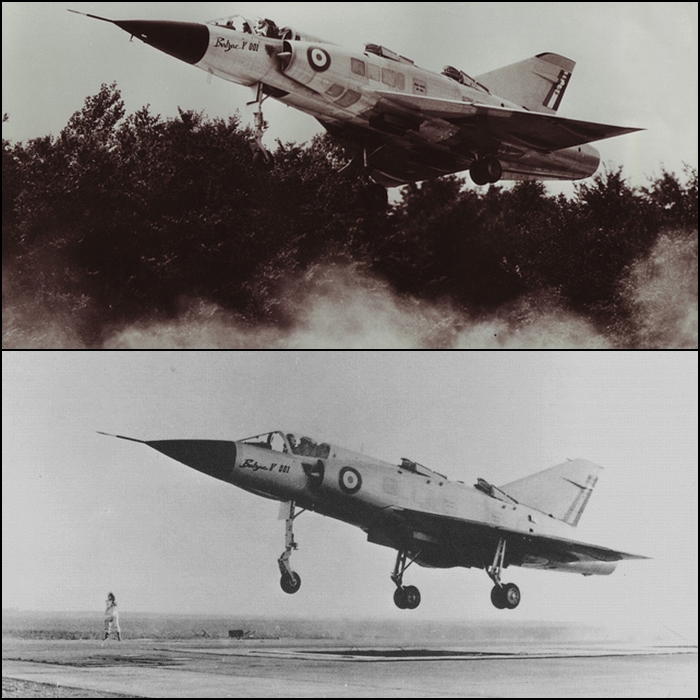
Mirage IIIV flight testing was conducted from 1965 to 1966 with the first vertical hovering test conducted successfully in February 1965. Unfortunately the prototypes were never able to complete a vertical take off and then go into supersonic flight during a test flight. Also with an incredible 8 Rolls-Royce RB162 vertical lift engines and a Snecma TF104B turbofan engine for horizontal flight it was complicated and was not going to be operationally efficient to maintain. Imagine the fuel use alone with so many engines (this was a similar but more powerful engine layout to the planned German EWR VJ-101D design)! One prototype was lost in an accident on November 28th, 1966 and the project was cancelled.

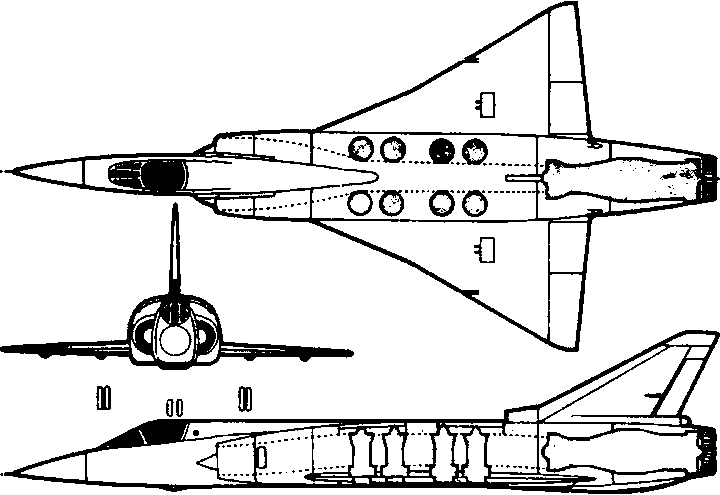

SOVIET EXPERIMENTAL V/STOL
In the 1960’s the Soviet Union was also experimenting with the concept of V/STOL combat aircraft. The Yakovlev Yak-36 Freehand was a V/STOL test aircraft fitted with 2 Tumansky R-27-300 vectored thrust turbojets for vertical flight and lift. The two engine nozzles were in the lower fuselage near the airframe centre of gravity. Development of the Yak-36 began in 1961 and the first tethered vertical test flight was conducted on January 9th, 1963. The first flight encountered a number of issues including poor air flow through the engine when hot exhaust gas entered the air intake and reduced the engines thrust. Modifications were made and a successful untethered vertical test flight was conducted on June 23rd, 1963. The first test flight that included vertical lift and horizontal flight was conducted on September 16th, 1963. It was not until September 1966 though, that a full test flight that included vertical take off, horizontal flight and a vertical landing was completed.
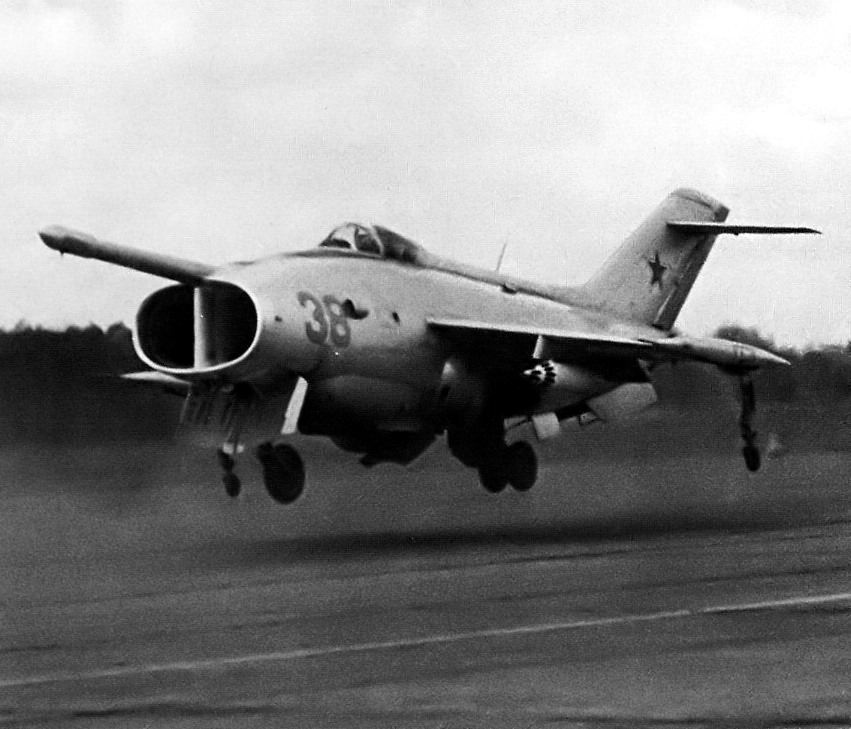
In addition to normal flight controls the Yak-36 pushed compressed engine bleed air through nozzles in the wing tips, rear fuselage and through the tip of that unusual nose boom, to aid vertical take off and landing. 4 Yak-36 prototypes were built but only 3 were used for flight testing with the other becoming a static testbed. 2 of the prototypes crashed with only 1 being repaired for reuse. The last prototype crashed in 1971 and was not rebuilt.
Although the Yak-36 could carry bombs or rockets on underwing pylons, the limited range and relatively low thrust made it unsuitable to be a fighter. Testing continued until 1971 and this led to the development of the Yakovlev Yak-36M Forger which first flew in 1970 and eventually became the Yakovlev Yak-38 Forger V/STOL fighter operated by the Soviet Navy (the Yak-36M was a pre-production version that was essentially the same being just slightly smaller and fitted with less powerful engines).
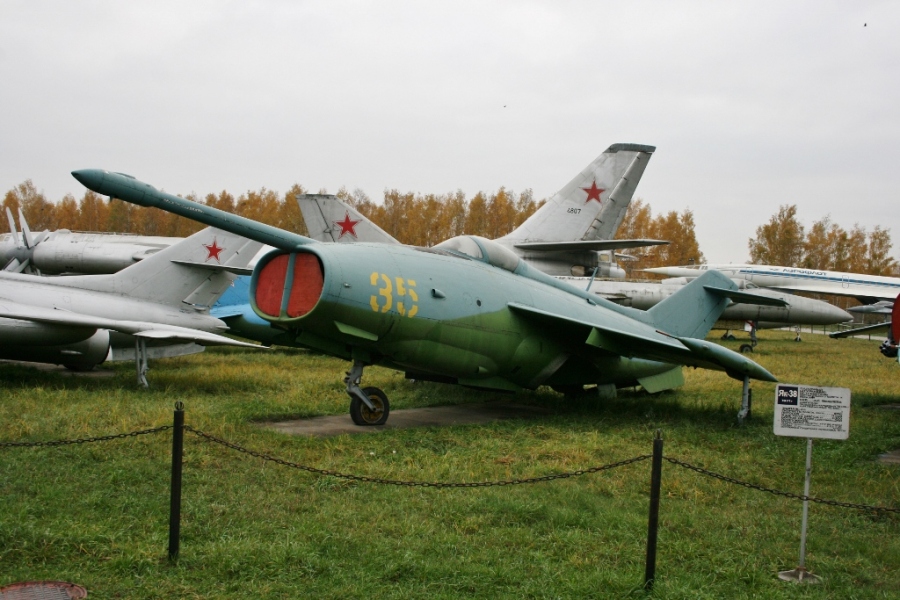
In my next post I will discuss the introduction of operational V/STOL combat jet aircraft such as the Hawker Siddeley Harrier and Yakovlev Yak-38 Forger, along with other experimental prototypes developed in the 1970’s. I will also discuss the Falklands War of 1982 where the Harrier and the Sea Harrier were blooded in combat and proved the frontline value of V/STOL.
References:
Flight International (February 22nd, 1968)

Great post. One of my most awesome experiences at the various air shows I’ve attended was watching a fligjt demo by a Sea Harrier. Simply stunning. A bygone age now, of course.
LikeLiked by 1 person
Thanks. Stay tuned for my next post as it will feature the Sea Harrier and info on the one flying in private hands in the US. I got to see a Sea Harrier fly a couple of times when I was a kid and agree it was great to see (an Aussie pilot was on exchange with the Royal Navy and was granted permission to do a flying display in his home town of Bendigo in Victoria, Australia)
LikeLike
Nice post. I was actually planning to do a post about some of these first VTOL attempts.
I really like the NASA experimental aircraft and the Harrier. Never saw one fly though…
Looking forward to the next post!
LikeLiked by 1 person
Thanks. I just put a focus on those intended for combat roles but it is fascinating to look at all the various prototypes and test vehicles for observation aircraft, test beds etc too
LikeLiked by 1 person
Superb post. A fascinating project the real winner being the Harrier (of course) sadly no more.
LikeLiked by 1 person
Thanks. Next post will have much more on those that became the operational combat aircraft and yes the Harrier and its variants were the absolute success story. Soviet efforts were more just to have something to compete in that class
LikeLiked by 1 person
Excellent! Indeed most excellent 🙂
LikeLiked by 1 person
Thanks!
LikeLike
[…] There is always something special about seeing a jet fighter just hovering in front of you. In my previous post I covered the early experimental prototype V/STOL combat aircraft of the 1950’s and […]
LikeLike
[…] my previous blogs I discussed the early experimental, prototype and operational V/STOL combat jet aircraft that were developed in the late 1950’s through […]
LikeLike
[…] my previous blogs I discussed the early experimental, prototype and operational V/STOL combat jet aircraft such as the Harrier and Harrier II that were developed […]
LikeLike